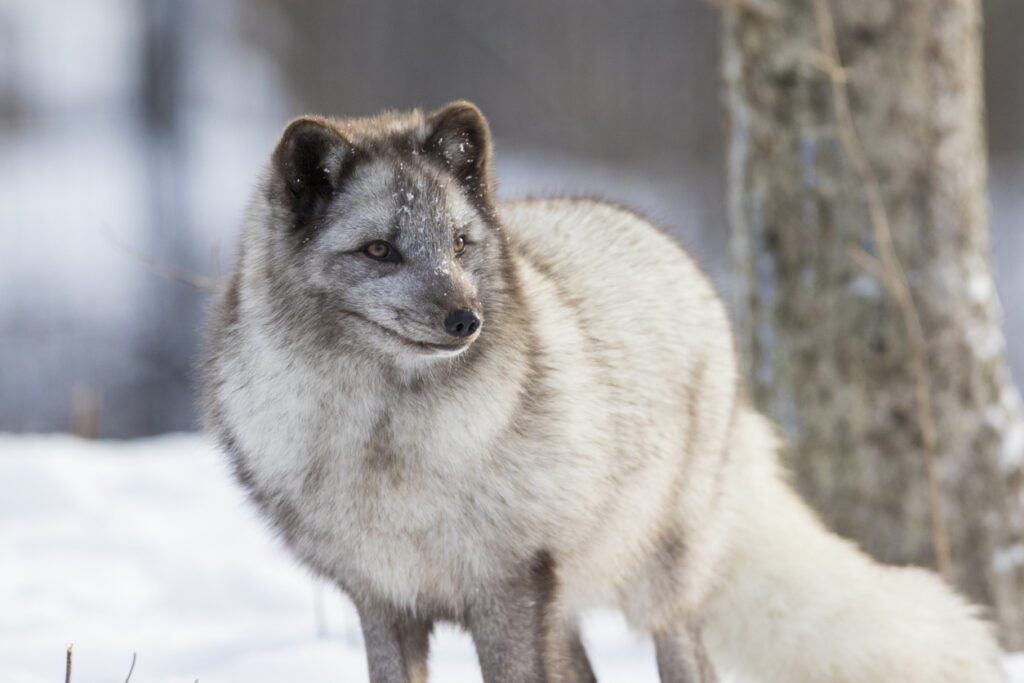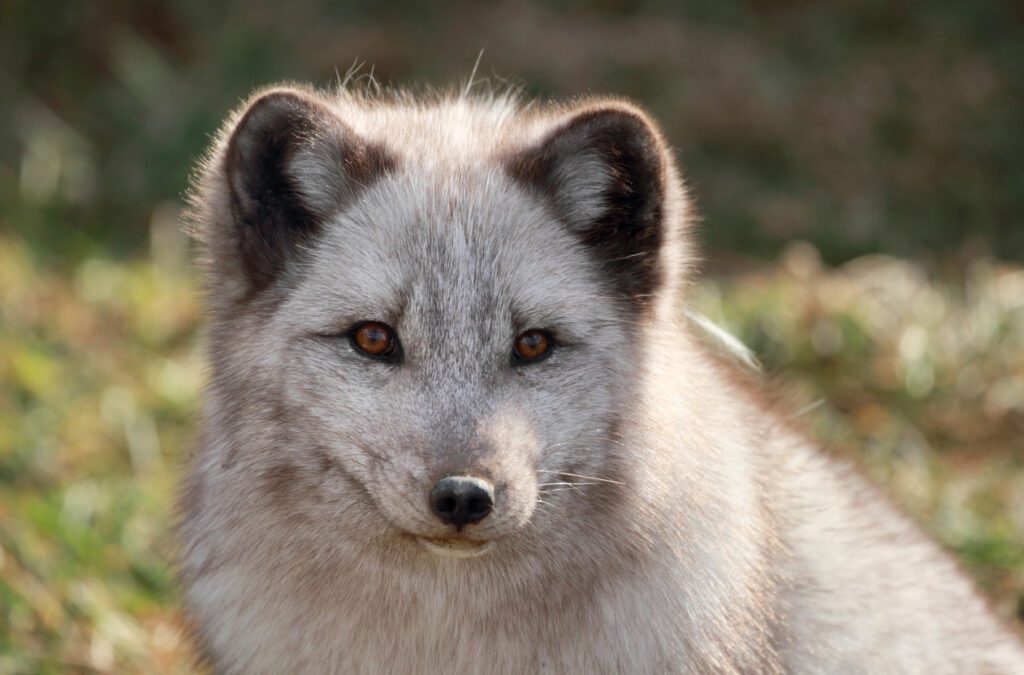As you know, I’ve written a lot about dog cognition and their domestication. Recently, because of the gray foxes I observe in my backyard almost daily, I have thought about a study I became aware of several years ago. A scientist in Russia was explicitly interested in the same subject and working on the feasibility of domesticating silver foxes. Silver foxes differ from gray foxes, but I wondered how that study had proceeded and whether there were any conclusions. While researching Google, I discovered it had continued for 59 years.
I can’t help but be captivated by the wild elegance of the one or more gray foxes in my backyard. The concept of domesticated foxes isn’t just a fantasy; it’s a burgeoning reality in certain regions. But what does it truly mean for a fox to be domesticated, and is it a potential we can embrace?
The Journey from Wild to Domesticated
Foxes share more traits with dogs than one might initially think. This is a testament to the fascinating behavioral flexibility within the canid family, as Dr. Alexandra Horowitz, author of “Inside of a Dog,” observes. Indeed, domesticated foxes exist in parts of the world, and their behaviors show an uncanny resemblance to our canine companions. These creatures are beautiful and intriguing in their potential for domestication.
Note: for further information about Dr. Alexandra Horowitz’s books and podcasts. https://alexandrahorowitz.net/home

Yet, the question remains—how do foxes transition from wild creatures to potentially domesticated pets? It’s a complex dance of genetics, environment, and behavioral shifts. Urban foxes, for instance, are believed to be in the early stages of self-domestication. This means they adapt to urban environments and show behaviors more tolerant of human presence. Dr. Chris Newman, a wildlife biologist, notes, “The adaptation of urban foxes suggests a significant behavioral shift, which could be an early stage of self-domestication.”
Note: For further information about Dr. Chris Newman, a wildlife biologist studies. https://www.wildcru.org/members/dr-chris-newman/
The Science Behind Domestication
Domestication is not as simple as taming a wild animal; it involves genetic evolution driven by selective breeding over generations. Dr. Elinor Karlsson of the Broad Institute emphasizes, “Understanding the genetic underpinnings of domestication in foxes offers insights into the complex interplay of genetics and behavior.” This interplay determines how or if a species can be domesticated.

For the last 59 years, a team of Russian geneticists led by Lyudmila Trut, the famed Russian silver fox experiments, where selective breeding for friendliness was explored. In these experiments, researchers selectively bred foxes for their friendliness toward humans, leading to significant changes in their behavior and appearance over generations. While these efforts have shown promise, they also reveal the challenges ahead. Dr. Clive Wynne, a dog and wolf behavior expert, states, “Selective breeding for friendliness in foxes is a fascinating experiment but comes with significant welfare and ethical considerations.”
Ethical Considerations and Challenges
While the potential for domestication is exciting, it also comes with significant responsibility. The welfare of the animals must be our top priority, ensuring their physical and psychological well-being. We must be mindful of ethical breeding practices to prevent unnecessary suffering and ensure the long-term health of domesticated foxes.
Additionally, pet owners must provide appropriate care and living conditions, respecting the species’ natural behaviors and needs.
Furthermore, we must consider the potential impact on wild fox populations. Domestication could introduce diseases, create resource competition, or lead to genetic dilution. It’s crucial to balance our desire for domestication and the need for wildlife conservation, ensuring we protect and preserve wild fox populations and their habitats.
As we delve into the potential of fox domestication, it’s important to recognize the promising benefits it could bring. With urban foxes already showing signs of self-domestication, this endeavor could lead to a closer, more harmonious relationship between humans and foxes. The potential benefits could include:
- Reduced fear of humans in wild foxes.
- Better understanding of fox behavior.
- Potentially even conservation benefits.
However, we must proceed cautiously, mindful of the ethical implications and challenges.
Foxes are a vibrant thread in the grand tapestry of life, their wild spirit captivating and inspiring.
References:
The silver fox domestication experiment https://evolution-outreach.biomedcentral.com/articles/10.1186/s12052-018-0090-x
Dr. Alexandra Horowitz’s books and podcasts. https://alexandrahorowitz.net/home
Dr. Chris Newman, a wildlife biologist, studies. https://www.wildcru.org/members/dr-chris-newman/
Thank you for reading this blog post. If you have any questions or comments, please leave them in the Comments section below.
Copyright © 2019. I Don’t Know All The Answers, Nikki Mastro.
All of my photographs and documents are Copyrighted.
The main image and several other photos included in this blog post are from the iStock.com library.
No part of this website, including text, photographs, and documents, may be reproduced, stored in a retrieval system, or transmitted in any form or by any means without written permission from the copyright holder. All unauthorized use is strictly prohibited. If you choose to copy or share any information from my site, you must provide a link to the source. I appreciate your cooperation.
For further information concerning “I Don’t Know All The Answers.”
– Website and Blog: https://www.idontknowalltheanswers.com
– Facebook: https://www.facebook.com/Nikki.L.Mastro/
– Instagram: https://www.instagram.com/i_dont_know_all_the_answers/
– Linkedin: https://www.linkedin.com/in/nikki-mastro-05455a3a/
– Youtube Channel: https://www.youtube.com/@idontknowalltheanswers1954

